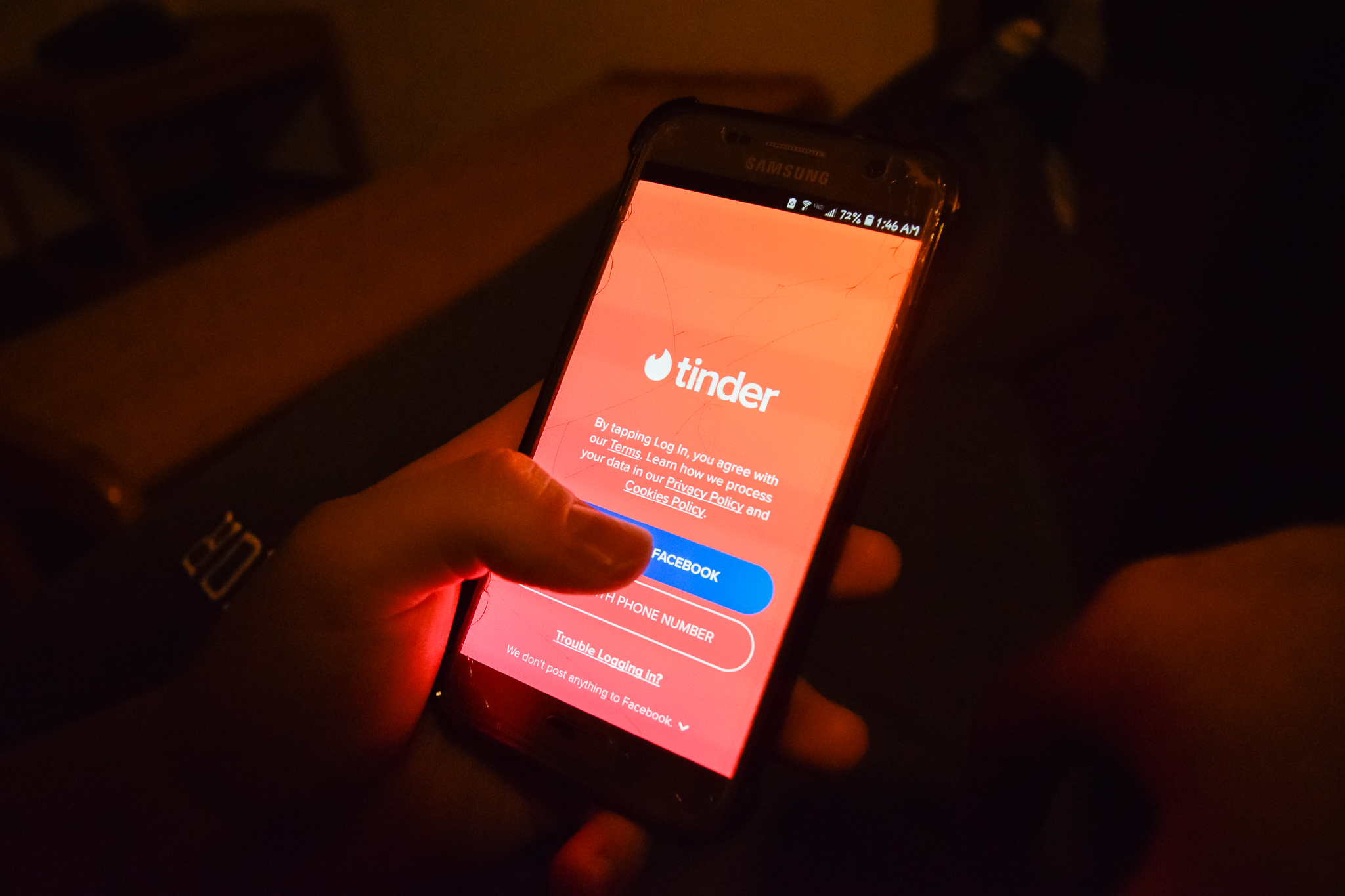
Tinder | Photo by Jessica Fugett | The Wright State Guardian
Online dating is something that many students experiment with in college, but it can be dangerous at times.
This year, Tinder is introducing several new safety features in order to protect its users and take away some of the anxiety that comes from online dating.
“I think the new safety features on Tinder are a great idea because as a woman, blind dates like these can be scary; but having an extra layer of protection makes it easier to enjoy,” said Katie Clark, sophomore education major.
The new updates
The panic button will be the first safety feature to be introduced to Tinder users. Within the year, photo verification and an offensive message feature will be introduced. In addition, a new section of the app called the “Safety Center” will allow users to log in the location and time of planned dates and share the information with friends in case of an emergency.
Panic button
Located inside the new Safety Center, the panic button saves users from dangerous situations on dates. Holding down the panic button alerts dispatchers who will send a text with a code and then call. If the call is not answered, then emergency responders are alerted. To access the panic button as well as the Safety Center, users will need to download the Noonlight app.
Photo verification
The photo verification feature hopes to catch catfish. The app will ask users to take pictures that match a set of posed pictures to determine if the user is real or not. Once users pass the photo identification, they will receive a blue checkmark by their name to let other users know that they are real.
Offensive messages feature
The offensive message feature will ask users if potentially offensive messages “bother” them. Over time, the app identifies what type of messages each user finds offensive and unmatches them from users who send offensive messages.
What the experts think:
What are the psychological effects of using dating apps?
“Being actively involved with Tinder, regardless of the user’s gender, is associated with body dissatisfaction, body shame, body monitoring, internalization of societal expectations of beauty, comparing oneself physically to others, and reliance on media for information on appearance and attractiveness,” said Nicholas Kovacs, doctoral student in the Department of Psychology.
How will these safety features improve the mental health of users?
“These features are likely to be more beneficial than not. Safety features could alleviate heightened awareness of threats from dates. Photo verification helps to remove spam or fake profiles that inevitably feel like a rejection when they either don’t meet up or don’t look at all
like their pictures. Offensive message features can help protect users, particularly those with lower self-esteem, from potentially damaging comments that attack aspects of their looks or behaviors they might already be sensitive to,” said Kovacs.
What other changes could be made for added safety?
“Instituting reporting features or features that allow someone to withdraw if they feel threatened would be a great move for Tinder. I would suggest that they link such things to local resources for those using the app, too. That way, a person can get concrete help if they need it. Here at WSU, our Counseling and Wellness Office and our Survivor Advocate Liaison can provide assistance for anyone who [has] experienced dating violence,” said Dr. Patricia Schiml, research professor and senior lecturer in the Department of Psychology.
Tinder has begun testing the panic button on users’ accounts. The photo identification and offensive message features will be introduced throughout the remainder of the year.
